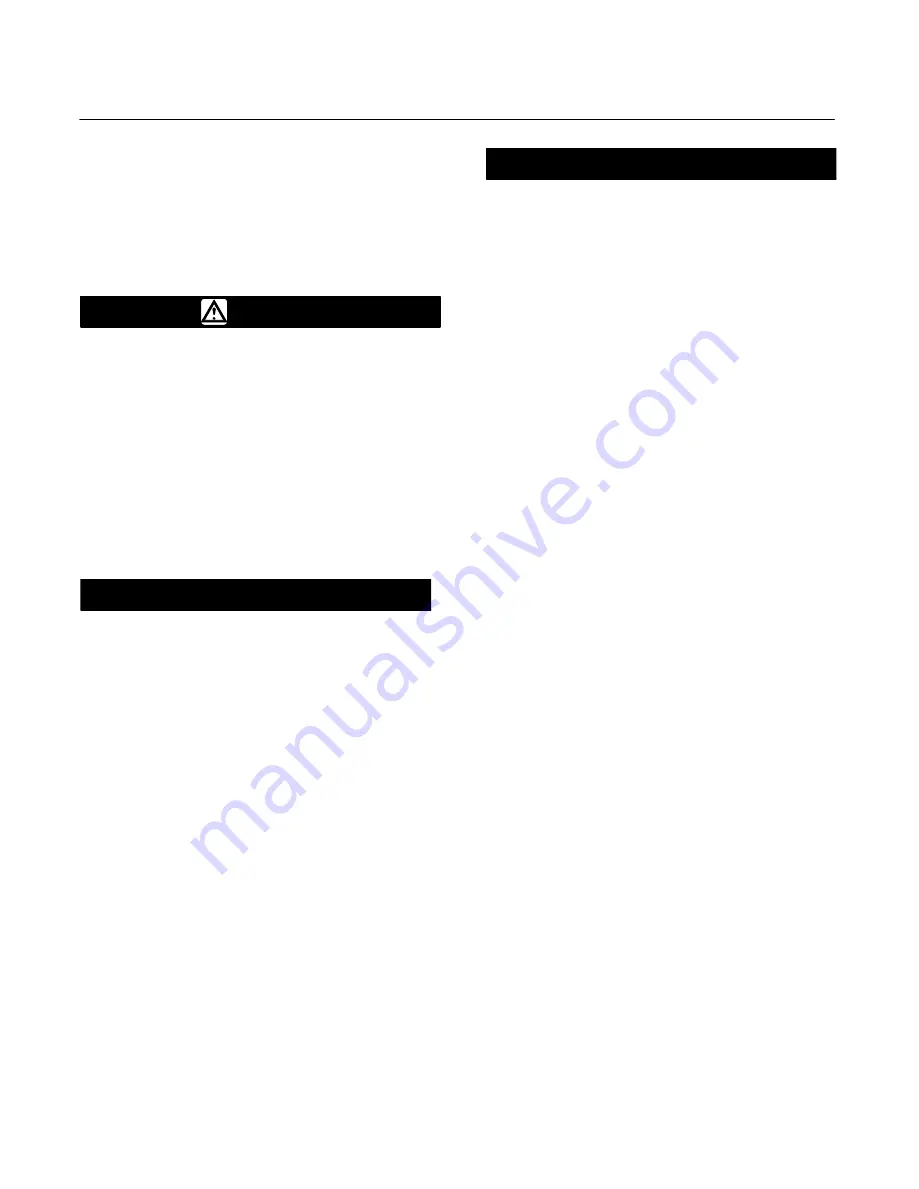
CV500 Valve
Instruction Manual
Form 5302
July 2006
9
This procedure may be performed without removing
the actuator from the valve if adding
PTFE/composition packing rings as a temporary
measure. However, the actuator must be removed if
replacing any other kind of packing or if the metal
packing parts (keys 14, 17, and, if used, 18) need to
be replaced.
WARNING
Refer to the WARNING at the
beginning of the Maintenance section
in this instruction manual.
1. Isolate the control valve from the line pressure,
release pressure from both sides of the valve body,
and drain the process media from both sides of the
valve. If using a power actuator, also shut-off all
pressure lines to the power actuator, release all
pressure from the actuator. Use lock-out procedures
to be sure that the above measures stay in effect
while you work on the equipment.
CAUTION
To avoid increased leakage, increased
valve component wear or possible
damage to the valve body, ball, shaft,
and bearings resulting from a sharp
blow to the shaft, use a wheel puller to
separate the actuator parts from the
drive shaft.
Do not drive the actuator parts off the
drive shaft since this could move the
valve bearings, shaft, and ball away
from proper alignment, causing
improper seating of the ball. Such
misalignment may result in damage to
valve components if the valve is
returned to service without
disassembly and inspection of the
valve ball alignment.
2. If necessary, remove the cap screws (key 25)
and hex nuts (key 26). Then remove the actuator
while referring to the actuator instruction manual for
assistance.
3. Remove the packing nuts (key 16). For 3- through
8-inch sizes, remove the packing follower (key 14). For
10- and 12-inch sizes, remove the packing flange (key
45) and then remove the packing follower (key 14).
CAUTION
In the following step, take care not to
scratch the valve shaft or packing box
wall, as this may cause leakage.
4. Remove the old packing rings (key 13), packing
box ring (key 17), and, if used, the lantern ring
(key 18). Do not scratch the valve shaft or packing
box wall; scratching these surfaces could cause
leakage. Clean all accessible metal parts and
surfaces to remove particles that would prevent the
packing from sealing.
5. Whenever you are installing new packing, be
sure the ball (key 2) is closed while you install and
tighten the new packing. Install the new packing
rings and packing box ring by stacking the parts as
shown in figure 6. Make sure split rings are arranged
so that the splits do not line up to form a leak path.
Then slide the stack into the packing box as far as
they will go while being careful to avoid trapping air
among the rings.
6. Install the packing follower (key 14), and, for 10
and 12-inch sizes, also install the packing flange
(key 45). Install the nuts (key 16), and tighten them
far enough to stop leakage under normal conditions.
7. Mount the actuator while referring to the actuator
mounting procedures in the actuator instruction
manual. Complete the Adjusting Actuator Travel
procedure in this manual before installing the valve
in the pipeline. This is necessary due to the
measurements that must be made during the
actuator adjustment process.
8. When the control valve is being put back into
operation, check the packing follower for leakage,
and retighten the packing nuts as necessary.
Replacing Retainer, Seat Ring, and
Face Seals
This procedure is to be performed if the control valve
is not shutting off properly, if installing a different
seat ring, or if seat ring inspection is necessary. The
actuator and valve must be removed from the
pipeline; however, the actuator may remain mounted
during this procedure. Key numbers refer to figure
11 for 3- through 8-inch sizes and to figure 12 for 10-
and 12-inch sizes unless otherwise indicated.
A retainer tool is required to remove the retainer
(key 5). If specifically ordered, a tool is supplied with
the valve; a tool can also be ordered individually by
referencing key 33 of the Parts List. If desired, a tool
can be machined using the dimensions shown in
figure 7.










































